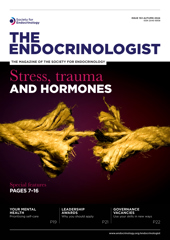Acromegaly primarily results from somatotroph pituitary neuroendocrine tumours (Pit-NETs) secreting growth hormone (GH), with about a quarter of cases involving co-secretion of GH and prolactin (PRL). This latter group presents more aggressively, yet data on the efficacy of GH-lowering therapies are limited.
In a retrospective, multicentre study, Araujo-Castro et al. assessed second-line therapies, pasireotide and pegvisomant, for acromegaly. The study included 150 patients who were unresponsive to first-line treatments, 122 having GH Pit-NETs and 28 with GH&PRL Pit-NETs. Among them, 124 were treated with pegvisomant and 49 with pasireotide at any time.
Both drugs effectively normalised insulin-like growth factor-1, with efficacy rates of 71.4% for pasireotide and 81.5% for pegvisomant. Despite the aggressive nature of GH&PRL co-secreting tumours, treatment efficacy did not significantly differ from tumours secreting GH only, though patients with GH&PRL co-secreting tumours required higher doses of pegvisomant. Densely granulated tumours responded less to pasireotide. Pasireotide was also linked to a higher incidence of hyperglycaemia and diabetes when compared with first-generation somatostatin analogues, highlighting the need for careful monitoring.
This study underscores the need for personalised treatment, based on tumour characteristics, offering valuable insights for endocrinologists managing acromegaly.
Read the full article in Endocrine-Related Cancer 31 e240043 https://doi.org/10.1530/ERC-24-0043





